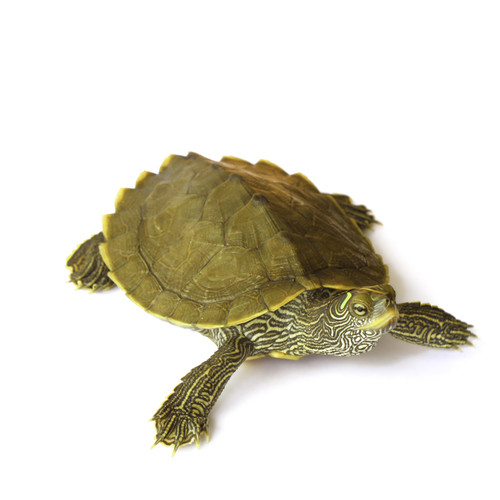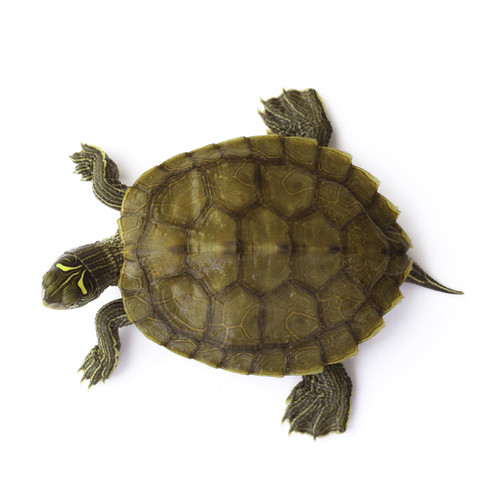Product Description
Juvenile Common Mud Turtle
Age Group: Adult
Common Name: Common Mud Turtle or Eastern Mud Turtle
Scientific Name: Kinosternon subrubrum
Description: Eastern Mud Turtles are a small turtle with an olive to black carapace. It is rounded without serrations as opposed to the keeled variety of their youth. It is hinged in two places and can completely close its shell if threatened. The skin is yellowish with heavy brown patterning.
Origin: These turtles are common throughout the Eastern United States from the Canadian border down to Florida and across to Texas.
Lifespan: These turtles can live for 30-40 years with proper care.
Habitat in captivity: These turtles are suitable for outdoor living year-round throughout most of the United States. They require a shallow pond with a deep sandy or muddy bottom that is heavily planted. In the winter, they hibernate in burrows that can be up to 3 feet deep. You also need to offer the following necessities;
- Basking, UVA and UVB – While UVA rays are necessary to encourage proper feeding responses and behavior, UVB rays are required for calcium absorption and basking heat is required for digestion, none of these require additional lights for a pond turtle. As the sun is allowed unfiltered access, these turtles will be allowed full access to this lighting without requiring an artificial source.
- Heat – In the winter months, a small pond heater may be recommended in Northern areas to prevent the water from completely freezing over. The water temperature should be no more than 50 degrees however, as this will add stress to hibernating turtles.
- Filtration – Filtration is very important in both tanks and ponds. In a pond there are more options such as a filter kit which has a fountain kit which will add the calming sound of running water while aerating to the pond.
- Habitat Décor – These turtles will spend quite a bit of time out of the water on land and may benefit from overhangs, floating logs and other decorations.
Diet: Common Mud Turtles will eat both vegetation as well as meat. They will actively seek out feeder fish and will enjoy the occasional shrimp. Vegetables and fruits such as romaine lettuce, collard greens, and squash are quickly consumed. Commercial pond turtle food is suggested as a staple part of their diet as it is properly balanced for your turtle and contains proper vitamins and minerals which may be lacking in turtles that prefer a certain vegetable over the mix.
Size at adulthood: This small turtle species grows to approximately 3-4 inches
Rating: Intermediate
Community Turtle: The Common Mud Turtle can be housed communally with other turtles as it is fairly docile. Add approximately 10 gallons per inch of turtle.












